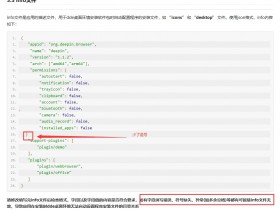- A+
所属分类:.NET技术
前言
如标题所述,在ASP.NET应用程序开发中,两个集合做比较时 我们使用微软IEnumerable封装的 Except/Intersect/Union 取 差集/交集/并集 方法是非常的方便的;
但以上对于不太熟悉的小伙伴来讲,在遇到求包含引用类型(不包含string)集合时就非常的苦恼;
下面我将带着大家去了解如何通过微软自带方法方式去取**复杂类型集合**的差集、交集、并集。
场景
这里是场景,我有以下两个学生集合。
namespace Test2 { internal class Program { public void Main() { //列表1 List<Student> StudentList1 = new List<Student>() { new Student {Id=1,Name="小明",Age=27 }, new Student {Id=3,Name="大郭",Age=28 }, new Student {Id=4,Name="老登",Age=29 } }; List<Student> StudentList2 = new List<Student>() { new Student {Id=1,Name="小明",Age=27 }, new Student {Id=3,Name="大郭",Age=28 }, new Student {Id=4,Name="老登",Age=29 }, new Student {Id=4,Name="小路",Age=28 }, new Student {Id=4,Name="小明",Age=30 } }; } } }
生成两个实体集合;
下面我们取交集/差集/并集
完整调用示例(.NET Core):
namespace Test2 { internal class Program { public static void Main() { //列表1 List<Student> StudentList1 = new List<Student>() { new Student {Id=1,Name="小明",Age=27 }, new Student {Id=2,Name="大郭",Age=28 }, new Student {Id=3,Name="老登",Age=29 } }; //列表2 List<Student> StudentList2 = new List<Student>() { new Student {Id=1,Name="小明",Age=27 }, new Student {Id=2,Name="大郭",Age=28 }, new Student {Id=3,Name="老登",Age=29 }, new Student {Id=4,Name="小路",Age=28 }, new Student {Id=5,Name="小明",Age=30 } }; //取比列表1里多出来的学生数据 并输出 var ExceptData = StudentList2.Except(StudentList1); Console.WriteLine("差集:" + String.Join(";", ExceptData.Select(x => { return $"{x.Id}-{x.Name}-{x.Age}"; }))); //取列表1与列表2里共有的学生数据 var IntersectData = StudentList1.Intersect(StudentList2); Console.WriteLine("交集:" + String.Join(";", IntersectData.Select(x => { return $"{x.Id}-{x.Name}-{x.Age}"; }))); //获取办理所有学生的数据(一个相同的学生只能一条) var UnionData = StudentList1.Union(StudentList2); Console.WriteLine("并集:"+String.Join(";", UnionData.Select(x => { return $"{x.Id}-{x.Name}-{x.Age}"; }))); } } }
输出:
差集:1-小明-27;2-大郭-28;3-老登-29;4-小路-28;5-小明-30
交集:null
并集:1-小明-27;2-大郭-28;3-老登-29;1-小明-27;2-大郭-28;3-老登-29;4-小路-28;5-小明-30
以上输出仔细看一下明显是不对的,这就涉及到了复杂类型对比,请看代码:
正常我们声明的类
/// <summary> /// 学生类 /// </summary> internal class Student { /// <summary> /// 编号 /// </summary> public int Id { get; set; } /// <summary> /// 姓名 /// </summary> public string Name { get; set; } /// <summary> /// 年龄 /// </summary> public int Age { get; set; } }
因为我们要对比的是引用类型,因为在对比除string引用类型外,其他引用类型的对比默认都是对比的堆里地址,所以我们要实现一个自定义的对比方案
我们需要继承一个接口 IEqualityComparer<T> 泛型接口
如下:(这里我们以年龄与名做为对比条件)
/// <summary> /// 学生类 /// </summary> internal class Student : IEqualityComparer<Student> { /// <summary> /// 编号 /// </summary> public int Id { get; set; } /// <summary> /// 姓名 /// </summary> public string Name { get; set; } /// <summary> /// 年龄 /// </summary> public int Age { get; set; } /// <summary> /// 比较器 /// </summary> /// <param name="s1">比较实体1</param> /// <param name="s2">比较实体2</param> /// <returns></returns> public bool Equals(Student s1, Student s2) { //验证相等条件 if (s1.Name == s2.Name && s1.Age == s2.Age) { return true; } return false; } /// <summary> /// 获取唯一条件 /// </summary> /// <param name="stu"></param> /// <returns></returns> public int GetHashCode(Student stu) { return (stu.Name + "|" + stu.Age).GetHashCode(); } }
修改了类后还有最重要的一点:就是修改比较的方法(相当于声明一个自定义的比较器给方法)
//取比列表1里多出来的学生数据 并输出 var ExceptData = StudentList2.Except(StudentList1,new Student()); Console.WriteLine("差集:" + String.Join(";", ExceptData.Select(x => { return $"{x.Id}-{x.Name}-{x.Age}"; }))); //取列表1与列表2里共有的学生数据 var IntersectData = StudentList1.Intersect(StudentList2,new Student()); Console.WriteLine("交集:" + String.Join(";", IntersectData.Select(x => { return $"{x.Id}-{x.Name}-{x.Age}"; }))); //获取办理所有学生的数据(一个相同的学生只能一条) var UnionData = StudentList1.Union(StudentList2,new Student()); Console.WriteLine("并集:"+String.Join(";", UnionData.Select(x => { return $"{x.Id}-{x.Name}-{x.Age}"; })));
输出:
差集:4-小路-28;5-小明-30
交集:1-小明-27;2-大郭-28;3-老登-29
并集:1-小明-27;2-大郭-28;3-老登-29;4-小路-28;5-小明-30
到这里引用类型的比较已经完成了,比较器的条件方法可以根据需求调整,如有不足之处,希望大家多多指正!!!




